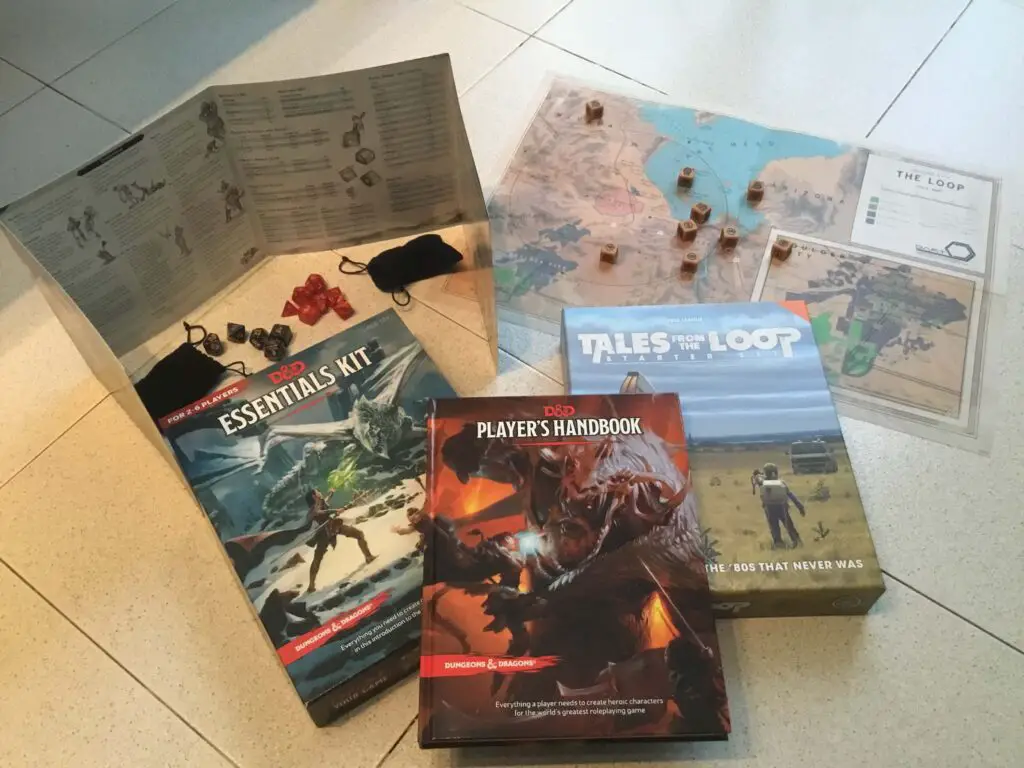In every corner of the world, students learning English want high-quality one-to-one tutoring. Whether it’s online or in-person, if you’re a private tutor (or hoping to be one), you can really stand out with fantastic classes that have your students progress at light speed.

But how? What makes a one-to-one class different to a small group or a big classroom? What methods and approaches ensure continued progression and engagement?
I’m glad you asked. This article is all about answering those questions and helping you become the best private EFL/ESL tutor possible.
Why take my word for it? I’ve been a private English tutor since 2016 in which time I’ve taught countless one-to-one classes, as well as lessons with small groups and big classes in public schools. I currently work full time as a private tutor and love every second of it.
The first things we’ll look at are the benefits and drawbacks of one-to-one teaching. Then we’ll look at some specific ways to create positive connections with our students, personalise their learning and make them feel comfortable and confident.
Later on, we’ll look at what makes a good one-to-one activity, how to adapt games to work with an individual student and how (if at all) to set homework.
While I generally teach my classes in-person, I understand many people tutor online, so I’ve made sure all the guidance in this article applies to both cases. However, if the online company follows a strict curriculum and method, some strategies here may not be applicable.
So let’s get to it!
What makes one-to-one EFL/ESL tutoring unique?
Tutoring an individual student is very different to teaching a class of 30+. For a start, it’s much calmer. There’s also the fact that you can create tailored lessons rather than balancing a variety of needs. You can make much faster progress with increased attention.

It’s not all perfect, though. Students each have their own personalities and behaviours, not all of which are easy to deal with. On a practical level, there are some things you can’t do with individual students that you can with a big group.
Benefits of teaching one-to-one
- Tailored and specific lessons allow students to progress faster.
- Creating rapport and engagement is easier.
- Behaviour management is typically less of an issue.
- You don’t have to prepare lots of differentiated materials for students of varying abilities.
- Students are more likely to take risks when there isn’t social pressure from a group.
- It’s much easier to give feedback on errors.
- Students have more agency.
Disadvantages of teaching one-to-one
- Expectations are often higher (especially when parents are involved) as private classes are generally quite costly.
- Lots of games and activities are difficult, if not impossible with just one student.
- Strong personality traits (shyness, arrogance, lack of motivation) have a stronger impact on the class.
- Students may think they’re in charge and try to direct the class themselves.
- One-to-one environments are intimidating for some students who would be more comfortable in a small group.
- The student and teacher might not get on.
From a business point of view, one-to-one tutoring can be quite lucrative, especially in-person. However, I’ve found students (or their parents) have a limit on how much they can spend. Often teaching small groups (3-4) earns more money as you can charge a higher rate which is split between all of them.
If you want to learn more about the practical and financial side of being an EFL/ESL private tutor, I have a whole series of articles walking you through the steps. Check out the big overview article here: How to Get Started as an EFL/ESL Private Tutor: Full guide.
Now we know the pros and cons of one-to-one tutoring, it’s time to look at how to highlight the pros and minimise the cons.
The first way to do this is with a Needs Analysis.
Personalised lessons require a Needs Analysis
Every student has their own, unique learning needs. They have strengths, weaknesses, preferences, interests and goals.
In a big class, it’s very difficult to provide lessons that cater to everyone’s needs; there will always be some conflict between students’ preferences and interests, meaning you have to take a more balanced approach.
Not so with one-to-one classes. A good tutor will design their classes to match the needs of their individual student and by doing so ensure targeted and effective progress.
But before doing that, you need to do a bit of detective work to learn what those needs are. That’s what a Needs Analysis is for.
A Needs Analysis is the process of understanding why your student is taking the class, what they’re good at, what they need to work on, what their personal interests are, and what kind of learning methods work best for them.
A Needs Analysis starts in the very first class and continues throughout every subsequent session.
In the first class, there are several things you can do to determine the needs of your student: targeted questions, specific activities, and a focus on getting to know the students’ personality.
All this informs how you should proceed. But during each and every class, the picture gains detail as you find out more about your student.
A Needs Analysis is important in every class, but especially in one-to-one tutoring. To find out more about how to perform one, read my in-depth article: Needs Analysis for Private EFL/ESL Lessons: 12 step guide.
Creating the correct social atmosphere is vital
To really get the best out of your individual students, they need to feel comfortable, respected and engaged. For different people, this means different things.
One of the most overlooked skills in teaching is managing social dynamics. In a large group, there are lots of different personalities that all mesh together, providing a challenge of its own, but in one-to-one classes, there’s just you and the student.
Each class is different. You could be teaching a moody teenager in one lesson, a hyperactive child in the next, then an extremely serious and studious adult after that.
For me, that’s the joy of teaching private classes. You get to interact with so many distinct characters and perspectives meaning every session brings its own hurdles and rewards.
As a teacher, you should be mindful of your students’ personality and change your approach to provide those three things mentioned above (comfort, respect and engagement).

What makes one person feel respected and comfortable may insult another. For example, giving lots of praise and encouragement at all times is usually a good idea for kids who lack confidence. But if you do it too much with some older students, they might feel patronised.
Another example: getting your student to speak a lot is fantastic for those who love to chat, but shy people may hate the pressure of being put on the spot so often.
Part of the Needs Analysis is understanding your students’ character. And throughout your classes you’ll learn more. Don’t be worried if you get things wrong in the beginning. Sometimes you need to see a negative reaction to know what they don’t like.
And while you do all this, try to be consistent in your own character. Students will feel much more comfortable and trusting if they know what to expect from you in every class.
Set expectations early and stick with them
Despite all this talk of adapting to your student’s needs and considering their personality, there’s a limit to how much you should accommodate.
Respect, punctuality and effort are a minimum for both you and the student. Some students can be quite rude, treating their teacher like a tool who should bend over backwards for them. I’ve find this is more prevalent in online classes.
Children might misbehave or refuse to take part. Sometimes students will turn up late or cancel last minute, leaving you in the lurch.

That’s unacceptable. Fortunately, most students are fine, but without clear expectations set out from the start (and consistently applied), you’re more likely to run into problems.
It all comes down to the power dynamic. In a traditional classroom, the power resides with the teacher. They tell the students what to do and have the authority to enact consequences.
It’s not the same with one-to-one classes. When people pay you for a service, the power is with them because they can withdraw the payment and take away your income.
Some students take advantage of this. Often, children who have enabling parents behave horribly and their parents expect you to deal with it. Adult students may try to boss you around or demand a refund if you don’t do what they want.
Again, this is a minority, but it does happen.
To avoid these situations, set out your expectations early on. This can be related to behaviour, cancellation policy, what kinds of things will happen in the lessons, and a reference to the power balance.

Ideally, you can discuss this with your student. Get their input on what they think is reasonable and come to an agreement that both parties will adhere to. It doesn’t have to be formal, but it must be clear.
With kids, setting out the details of what they can and can’t do is vital. If you don’t tell them, they’ll try to find out on their own, something which can be frustrating for you and them and prompt them to behave worse than usual just to see where the limits are.
In terms of the power balance, you want it to be about 50-50. Students need agency. But you’re the expert who knows what’s best. Make sure they understand you’re willing to be considerate and compromise, but you won’t be a pushover.
It’s also great to let students know what they can expect from you. Assure them you’ll bring a high standard of teaching and do your best to adapt to their needs and wishes.
Setting boundaries is key to creating an atmosphere of trust and comfort. To learn more about how to do it, read my guide: How to Set Rules & Expectations in Private EFL/ESL Classes.
Choosing great activities drives learning
Now we’ve figured out our students’ English ability, made them feel comfortable and set expectations, we can start thinking about what activities to do with them in class.
The Needs Analysis is going to provide the basis for our decision making. We should choose activities based on these factors:
- Topic interest
- Target language functions (grammar, pronunciation, reading, etc.)
- Suitability for student’s personality
Ideally, we’ll find activities that fit all three factors. If not, we can adapt other activities to what we need. Let’s look at some examples.
Example student 1
Example student 1 is confident, chatty, loves talking about travelling around the world, but has very sloppy pronunciation and limited vocabulary. They want to learn English to get a promotion at work. Their level is intermediate (B1/B2)
Fantastic. We can look at the three factors in turn:
- Topic interest: World travel and a business environment
- Target language functions: pronunciation and vocabulary
- Personality: plenty of conversation and communication
My first thought is to find some source material to elicit vocabulary and provide a basis for pronunciation. Video clips of business people travelling. Adverts for airlines. Difficult conversations at hotels where there’s been a booking mistake with the company. Travel review websites.
From that source material, we can note down and learn the authentic vocabulary that appears, and slow things down to focus on pronunciation. Pick out a few key phrases and have the student repeat them with the correct sounds.
Next, I’d put those skills into practice with some role-plays of travel situations. Then I’d follow that up with a task where we plan an imaginary business trip and have to decide which hotels to stay in, what transport we need, company budget, etc.

Example student 2
In this example, you learn that your teenage student is shy and doesn’t take risks. They have quite a high level of grammar, pronunciation and vocabulary (B2/C1), but low confidence and fluency. They’re in the class because their parents are forcing them. They like video games and martial arts.
The approach for this student is completely different to example 1.
- Topic interest: video games, martial arts
- Target language functions: confidence and fluency
- Personality: Shy and disengaged, so we need to get them interested and confident.
Forcing them to speak a lot in the early stages will likely be met by resistance, so we need to establish trust and a safe environment first. We need to make the sessions fun, but not too high energy.
My first thoughts are to take advantage of topic interest. There’s a risk of them not wanting to associate “boring” English with their cool hobbies, but I’d definitely ask them to tell me about their favourite video games, what they do in martial arts class, etc.
Some games like Say and Draw and Two Truths and a Lie encourage some speaking without putting on too much pressure.
Then I’d introduce the idea of a tabletop role-playing game. These games take place over many sessions and students play a character on an adventure, deciding what they do and interacting with the world. It’s a little like a video game, but you speak and role-play instead of pressing buttons.

I’d allow their character to be a fighter, tapping into their martial arts interests. Through this game, they can really develop fluency and confidence, without feeling like they’re in a “boring” English class.
I’ve used tabletop role-playing games with lots of students who struggle with confidence. It gets them engaged and excited, and they end up speaking fluently without realising.
Adapting games to play with individuals
The bulk of games used for teaching English are for groups. While some work fine with two players, most of them don’t.
There are some games that are impossible to play in a one-to-one class, but there are others you can adapt. When you do so, consider that, if they’re competitive, you have an advantage over the student.
- If it’s time-based, give them extra time, or yourself less time.
- If it’s point-based, handicap yourself (it’ll take a couple of tries to find a fair handicap).
- Choose collaborative games where you can work together, like Memory Chain.
- Play one-player games, like Alphabet Race, where students compete against the clock, or try to beat their own time.
- Pick games where winning isn’t determined by the level of English.
Don’t neglect important skills
When I’m teaching private classes, especially one-to-one, I tend to avoid reading and writing activities and have to remind myself they’re important, too.
The problem is, if you’re being paid to give one-to-one tuition and you set your students to write a 100-word story, or read a long passage in class, during that time you’re not working. Sure, the student might ask you what a word means, but it’s mostly silent time.
Silence isn’t always bad, but extended periods of silence are best avoided. After all, you’re not getting paid to sit there doing nothing.

But reading and writing are important skills. You should practice with all students, unless they specifically say they don’t want to, like in conversation classes.
One way of avoiding those long silent periods is to set reading and writing tasks for homework (we’ll talk more about homework in the next section).
Another way is to practice reading and writing through a shared activity.
With reading, you can take turns reading paragraphs aloud. Get students to highlight words they don’t know as you go along, and identify a few yourself, checking their understanding.
Reading aloud also identifies pronunciation errors and lets you to model the correct way of saying both words and the flow of words in a sentence.
When it comes to writing, why not do a collaborative writing attempt? Take turns writing a sentence. Brainstorm some ideas and make a plan, with a few keywords and phrases. Correct a writing task together, with students analysing their own work.

There are plenty of ways you can provide value to reading and writing activities in class in an interactive and engaging way.
But sometimes, students need to do things on their own. That’s what homework is for.
Setting homework is student-dependent
In an ideal world, you could set homework for every student and count on them handing it in on time and to a high standard.
The reality is, most private students don’t do homework. It’s hard enough getting kids to do it at school where there are punishments and parental backing.
Adults, especially, are bad at doing homework. It’s not surprising, really, because they don’t have parents nagging them, and most people are too busy getting on with their lives to spend an hour or two with a bunch of worksheets they don’t care for.

You will get some highly motivated students who will always do their homework and even ask for more. In that case, set all the homework you like.
For the rest, if you want to set homework, build that into your expectations at the start. Be generous with deadlines (I like to give two weeks instead of one) and have them hand it in before the class, so you can look at it and give feedback in that session rather than the following one.
Give interesting homework tasks, too. It’s okay to set some longer writing tasks or reading exercises from time to time, but the more engaging you make the activities, the more likely your students will do them.
For my best homework practices, check out this article: 5 Tips for Setting Homework in Private EFL/ESL Classes and for some interesting activities, head to my list: 9 Engaging Homework Ideas for EFL/ESL: No worksheets!
Conclusion
One-to-one teaching is all about developing a positive, professional relationship with your student. The connections you make and the understanding you reach is far stronger than when teaching a big group, and this gives an amazing opportunity to make a huge difference.
That doesn’t mean it’s easy. It’s normal to make mistakes at first, or feel frustrated when you can’t reach some students. One of my first ever classes was with a very shy girl who would hardly speak. But after two years of patience and kindness, she opened up, and it became difficult to stop her from speaking!
There’s also plenty of creativity involved. Finding the perfect game, adapting activities to suit your student’s needs and engaging them with lessons they love is an exciting challenge. Every session is different.
I hope this article helped you gain the confidence and tools to go ahead and ace your one-to-one private tutoring classes. Don’t forget to check out my other guides which will take you to the next level.
Follow the links below to learn how to be the best private EFL/ESL tutor possible.
Ultimate Guide to Giving Great EFL/ESL Private Classes
Needs Analysis for Private EFL/ESL Lessons: 12 step guide
Principles of Designing Amazing Private EFL/ESL Lessons
Acing Your First Private EFL/ESL Class: 9 Steps to Success
Lesson Plans for First Private EFL/ESL Lesson (+ tips)
How to Set Rules & Expectations in Private EFL/ESL Classes
What to Do if Private EFL/ESL Students Won’t Participate
Getting EFL/ESL Exam Preparation Right: Tips for success
Give Amazing Private EFL/ESL Classes to Kids: 9 steps
7 Steps for Incredible Private EFL/ESL Conversation Classes
Teaching EFL/ESL Grammar: A guide for private tutors
5 Tips for Setting Homework in Private EFL/ESL Classes







